Planning a trip to Iceland in October? Lucky you! October in Iceland is magical with waterfalls framed by a golden landscape, crisp, fresh air, and the possibility of catching the Northern Lights dancing across the sky. But to enjoy this otherworldly landscape, you’ll have to come prepared.
The weather in Iceland is wild and unpredictable and hovers between 36 – 45 degrees F. You’ll likely experience wind and rain, with the possibility of snow. You might even get all three in one day. That’s why planning out your Iceland outfits in October is crucial.
Lucky for you, I’ve been there (more than once!) and learned a few things along the way. With this ultimate guide to Iceland outfit ideas for October, you’ll be protected against the elements and ready to adventure through the land of fire and ice whatever the weather!
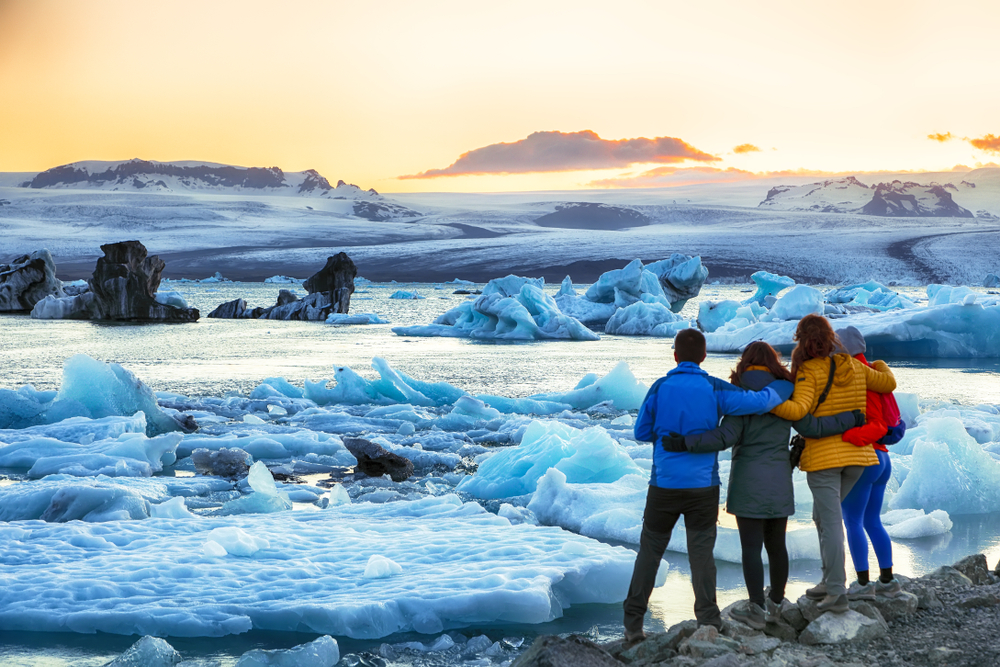
What To Wear In Iceland In October
Layers Are Your Best Friend
Braving the weather in Iceland is all about wearing the right layers. The weather can shift fast, so layering lets you adjust to whatever’s thrown at you. Here’s the breakdown:
Base Layer
Your base layer is all about warmth and wicking away sweat. October in Iceland can be chilly, but you’ll likely be moving a lot, so choose moisture-wicking fabrics like merino wool or synthetic materials.
Top: Long-sleeve thermal top (merino wool is a great option here).
Bottoms: Thermal leggings or tights.
Middle Layer
This layer is for insulation. Think fleece, down, or a nice warm sweater. (You might even consider investing in an Icelandic wool sweater when you arrive. They’re beautifully designed, one of a kind, and will certainly keep you warm).
Top: A fleece or wool sweater.
Bottoms: If you’re prone to getting cold, fleece-lined leggings are a game-changer.
Outer Layer
Your outer layer is your armor against wind and rain. Iceland in October (really any month) is wet, so a good waterproof jacket is non-negotiable. Even if it’s not raining, waterfall adventures can sometimes involve being misted, or on a particularly windy day drenched, by the waterfall spray. Again, waterproof is the name of the game.
Top: A waterproof, windproof jacket. The longer and more body coverage it has, the better.
Bottoms: Waterproof pants (not the most glamorous, but trust me, you’ll thank me when the rain starts pelting at you sideways).
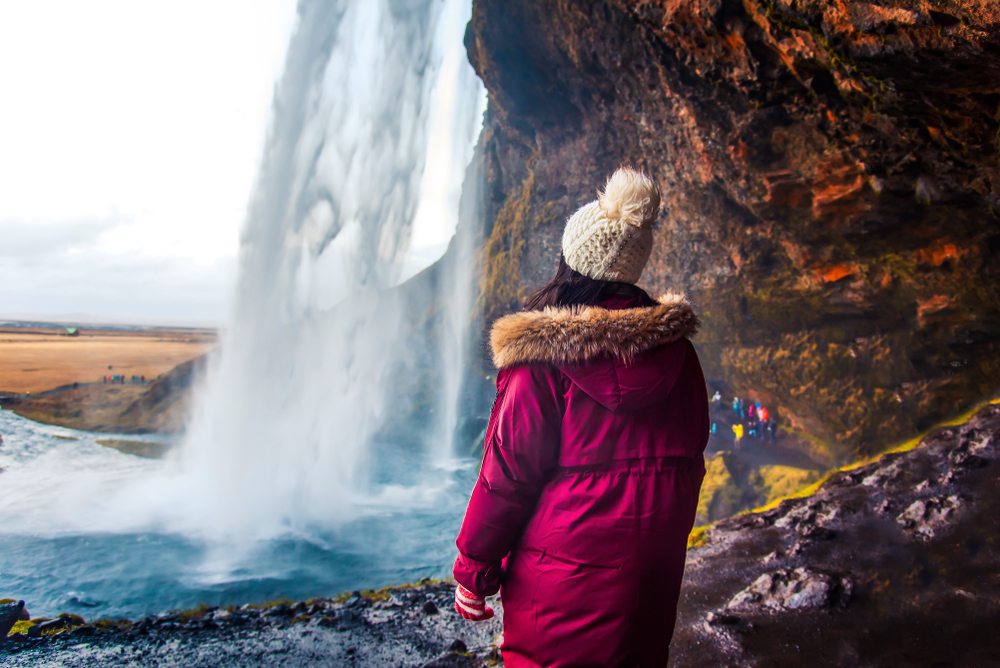
What Shoes to Wear for Iceland in October
Shoes can make or break your trip. The wrong ones? You’ll be wet, cold, and miserable. The right ones? You’ll be unstoppable.
Ankle Hiking Boots: So much of visiting Iceland is about adventuring through the unique natural landscape. The best way to explore? Hiking! Many of Iceland’s most spectacular hikes involve rocky terrain with some even throwing in a river crossing or two. A solid pair of waterproof hiking boots is a must. Look for something with plenty of ankle support and a sturdy sole.
Waterproof Low or Midrise Boots: For days in the city or light exploring, a comfy pair of waterproof low or midrise boots will keep your feet dry and stylish.
Insulated Winter Boots: If you’re someone who feels the cold, pack insulated boots. There’s no need to be distracted by freezing cold toes while you’re trying to take in the sights.
Sneakers (Maybe): Honestly, if you bring sneakers you might wear them from the airport to your hotel and never take them out again. They’re really only suitable for dry days (which may be rare) spent casually wandering the city.
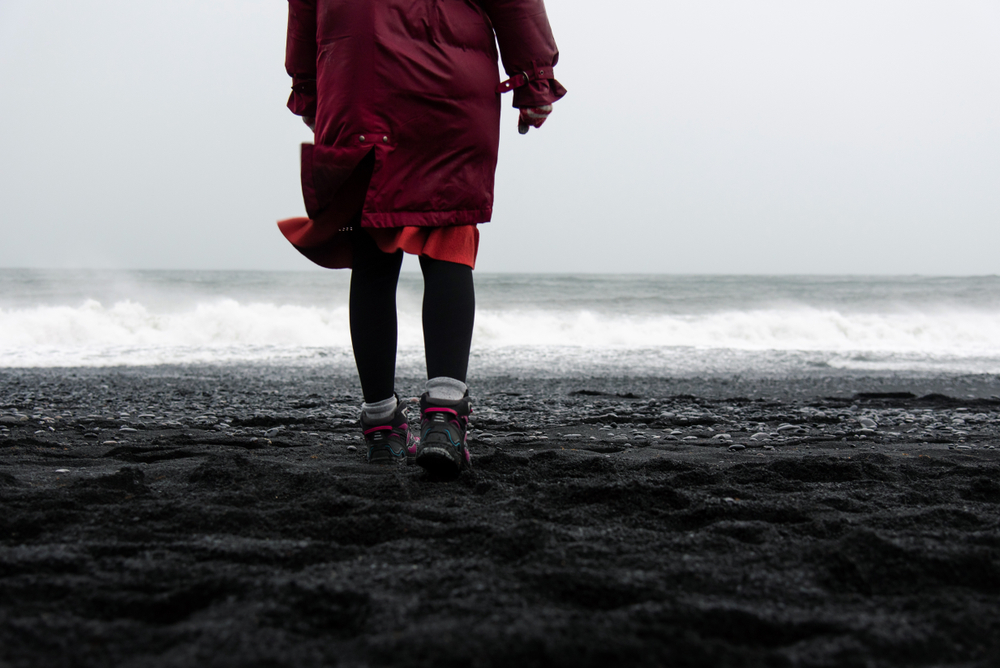
Iceland Outfit Ideas For October
For exploring the outdoors, practicality will be your best friend. You’ll be layering up to brace yourself from the cold. Wear whatever is most comfortable and keeps you the warmest, and if you’re hoping to make a fashionable impression with your photos, opt for a stylish outer layer.
For the city? You’ll have a little more freedom to dress in style. Here are a few October outfit ideas for Iceland that tick all the right boxes.
Casual Day Exploring Reykjavík
If you’re spending the day exploring Reykjavik’s museums, cafes, shops, and iconic landmarks you can have a healthy mix of style and function as you won’t have to battle the elements in quite the same way as you would on an outdoor adventure. That being said, it will still be cold, quite possibly rainy, and you’ll be doing plenty of walking, so plan accordingly.
If only half of your day will be spent in the city, you might opt for wearing the full layers of clothing you’ll need for your afternoon adventures out in nature, and avoid having to change clothes.
Base Layer: Thermal top and leggings.
Middle Layer: Cute oversized wool sweater (bonus points if it’s Icelandic wool!).
Outer Layer: A stylish, waterproof coat.
Shoes: Waterproof boots that can handle some light rain.
Accessories: A colorful scarf and a beanie.
Why it works: These clothing items allow you to properly address the chill as you walk between destinations, while still adding a touch of your own style in an outfit fit for a city environment.
Hiking Adventure
Base Layer: Moisture-wicking thermal top and bottoms.
Middle Layer: Lightweight fleece.
Outer Layer: Fully waterproof jacket and pants.
Shoes: Waterproof hiking boots with good grip.
Extras: Wool socks and a buff (an item you’ll notice many Icelanders wearing) to protect your neck from the wind.
Why it works: Hiking in Iceland often means walking on rugged terrain, encountering a waterfall or two, and maybe a river crossing on the more adventurous hikes. This outfit combo is less about style and more about practicality so you’re comfortable and dry for your thrilling adventures.
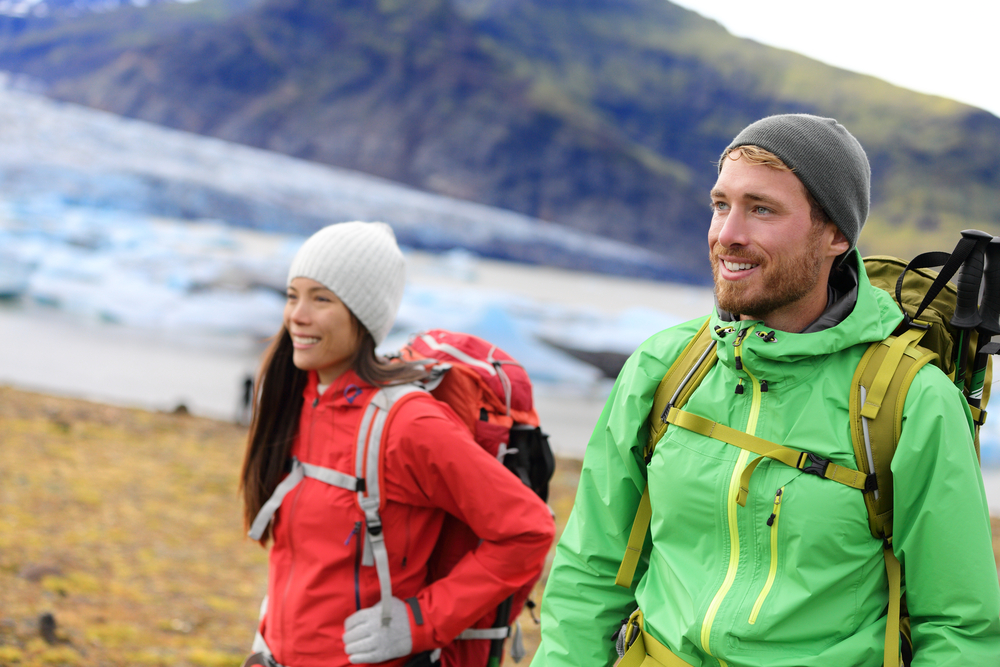
Northern Lights Chasing
Catching a glimpse of the Northern Lights is a memory you’ll cherish for the rest of your life. But waiting around for that special glimpse requires patience and a dash of luck.
The Northern Lights are elusive and require just the right circumstances to be visible. This means you could be waiting for a long time in the cold for everything to align just so. Here’s what to wear to make sure you’re comfortable throughout this experience.
Base Layer: Merino wool everything.
Middle Layer: Insulated puffer jacket.
Outer Layer: A parka if it’s especially cold. The lights are best viewed late at night, so expect it to be cold.
Bottoms: Fleece-lined leggings or ski pants.
Shoes: Warm boots with good insulation.
Accessories: Thick gloves, a hat, and maybe even hand warmers.
Why it works: Northing Lights viewing is not a particularly active activity. You’ll be standing still, probably taking photos for however long the light show lasts. No one wants to be thinking about how cold they are in the middle of a once-in-a-lifetime moment. With the proper layers and a few extra items such as hand warmers for good measure, you can block out the cold and enjoy the experience.
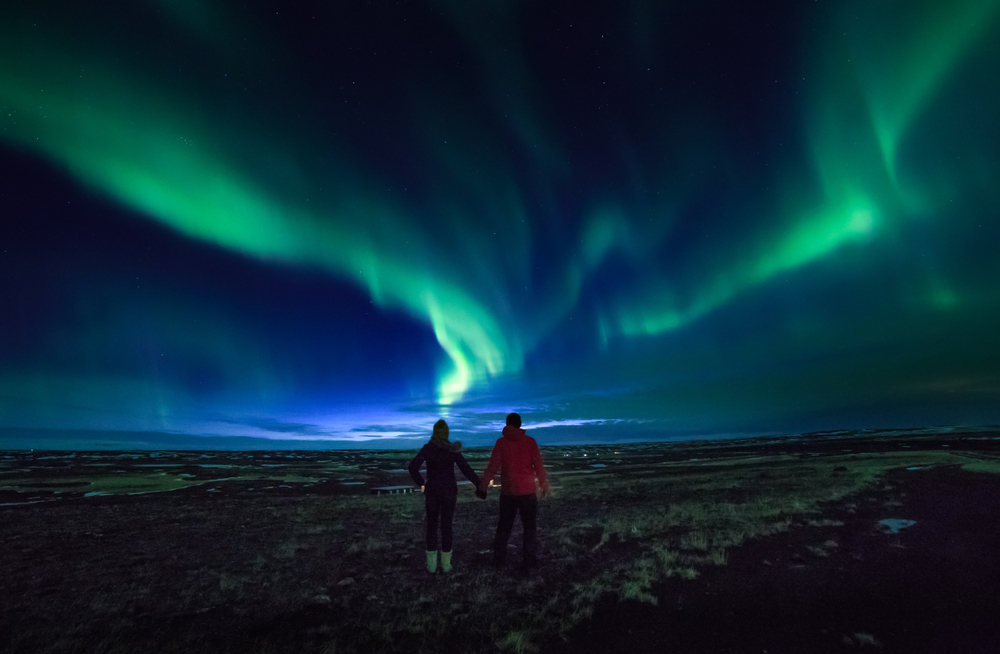
Weather Packing Tips for October in Iceland
☀️ If It’s Cold and Clear Iceland’s crisp, sunny days are ideal for packing in adventures so you’ll want to layer for warmth while still feeling comfortable while active. A thermal base layer under a fleece sweater works perfectly. Pair this with insulated leggings or hiking trousers and waterproof ankle boots. Add a beanie, gloves, and sunglasses to protect yourself from the bright autumn sun.
🌧️ If It’s Rainy When rain is in the forecast (the reality more days than not), a waterproof shell jacket or parka is your best friend. Layer it over a cozy, wool sweater and pair it with waterproof pants and fleece-lined leggings. Waterproof hiking boots or ankle boots will keep your feet dry as you explore the muddy landscapes.
🌬️ If It’s Windy or Extra Chilly For those days with fierce winds, bundling up is key. Wear a thermal base layer under a chunky knit sweater, and top it with a down jacket or heavy parka. Add a thick scarf, wool hat, and thermal gloves. Fleece-lined leggings or weather-resistant pants will keep your legs warm, and tall insulated boots will provide extra protection against the cold.
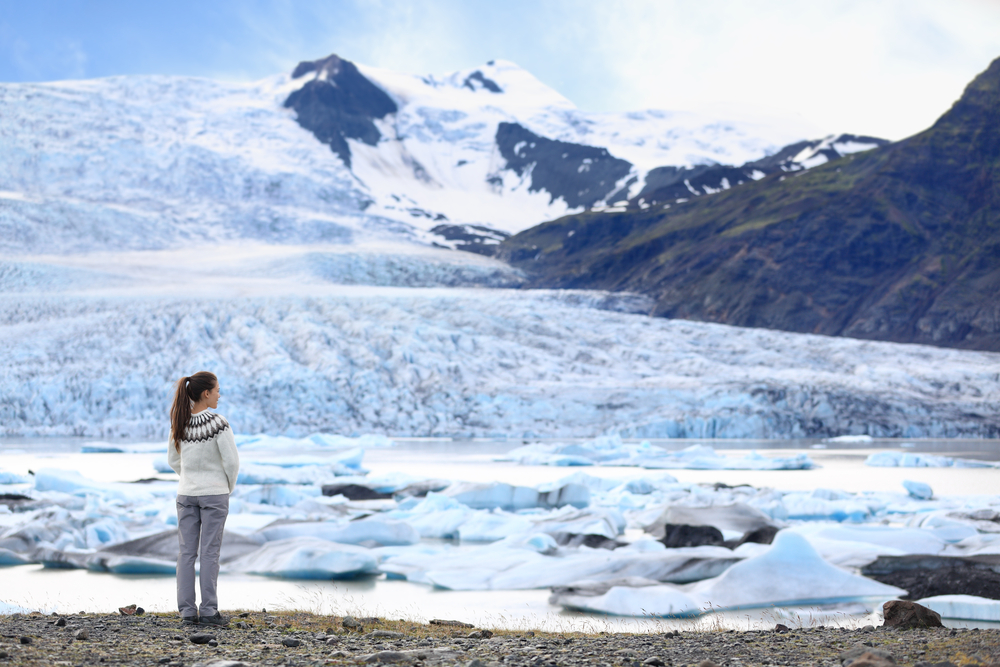
What Not to Wear in Iceland in October
Some clothing choices might seem fine at first glance, but they can quickly turn into a nightmare in Iceland’s unpredictable weather. Here’s what to avoid:
Cotton Clothing: It absorbs moisture and takes forever to dry, leaving you cold and uncomfortable. There are however exceptions where it makes a very comfortable option on the rare dry, sunny day.
Non-Waterproof Jackets: That stylish coat might look great, but if it’s not waterproof, you’ll regret it when the rain hits (which is often). When visiting waterfalls, if you get close enough you’ll likely get a splash of waterfall spray courtesy of Iceland’s fierce winds. You’ll want waterproof everything for that too.
Jeans: Jeans and water don’t mix well. They get wet, stay wet, and won’t keep you warm. Instead, opt for thermal leggings or quick-dry hiking pants.
Fashion Boots: Cute, yes. Practical, no. They offer zero grip, support, comfort, or warmth for exploring Iceland’s rugged terrain on a cold day.
Umbrellas: Umbrellas would be a nice thought if it wasn’t for the fierce wind so consistently present on a cold, October day. An umbrella won’t stand a chance. Stick with a waterproof hooded jacket instead.
Shorts or Summer Dresses: Even on a “warmer” October day, it’s not warm enough for these. For that matter, even a sunny Icelandic summer day rarely warrants an outfit of shorts and summer dresses.
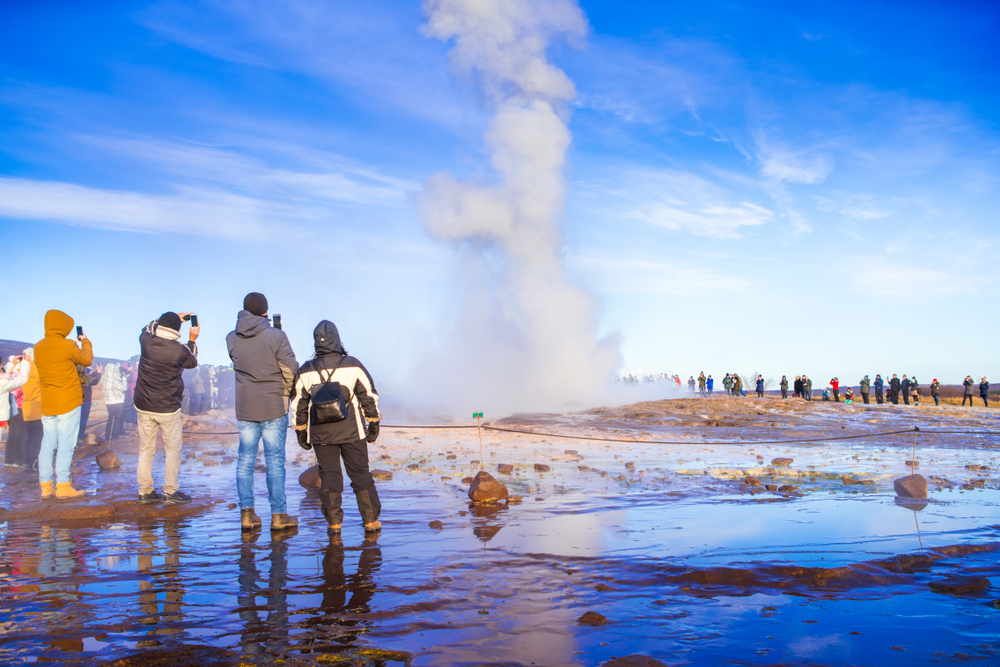
What to Pack for Iceland in October
Here’s a no-nonsense Iceland packing list for October to keep you covered in any scenario.
Clothing
Thermal tops and bottoms – For your base layer of clothing.
Fleece or wool sweaters – For your middle layer of clothing.
Fleece-lined leggings or hiking pants – For your middle layer of clothing.
Waterproof jacket and pants – For rainy days and exploring waterfalls.
T-shirts – A couple of casual T-shirts for layering under sweaters on sunny days.
Insulated puffer jacket – I know this takes up a lot of packing space and you’re already layering your outfits to prepare for the cold, so while this is optional, you certainly won’t regret it if you bring it along for extra warmth.
Shoes
Waterproof ankle hiking boots – Waterproof ankle hiking boots will be your best friend. Whether you’re tackling a river crossing or hiking into a steam-filled valley, these will give you the stability and warmth to tackle Iceland’s wide variety of landscapes.
Waterproof low or midrise boots – For casual hikes on flatter terrain and walking around town, waterproof low or midrise boots will get the job done.
Sneakers – Sneakers are not the most practical shoe choice for Iceland, but if you have a favorite pair that is comfortable, go ahead and bring them for a sunny day spent wandering the capital city.
Accessories
Wool socks (bring extra pairs in case they get wet) – again Merino wool socks (moisture wicking and temperature regulating) are a great option.
Beanie or wool hat – Any kind of hat that covers your ears is a must between getting hit with the cold and the wind.
Gloves – The ideal would be gloves that are both insulated and waterproof. Bonus points if they’re touchscreen gloves that don’t require you to take them off to use your phone for taking pictures.
Scarf or buff – These will keep the wind off your neck.
Hand warmers – Any time you won’t be actively using your hands and can keep them in your pockets (such as Northern Lights viewing), I suggest bringing hand warmers for an added layer of warmth. You won’t regret it.
Other Essentials To Add To Your October In Iceland Packing List
A small daypack/hiking backpack – If you love outdoor adventures you’ll likely be tackling multiple hikes throughout your trip to Iceland in October. A small backpack will be perfect for bringing along the essentials. If it’s waterproof, even better!
Reusable water bottle – Don’t bother buying water in Iceland. The tap water in Iceland is some of the freshest, purest, best-tasting water in the world. Turn the faucet all the way to cold and enjoy!
Camera and tripod – You can certainly take spectacular photos on your phone, but if you have a camera and tripod, you’ll want to bring them along. Iceland is one postcard-worthy photo opportunity after another. From the Northern Lights to long-exposure waterfall shots, your camera and tripod will get more than enough use to warrant bringing them along.
Swimsuit – A swimsuit may seem like a strange item to pack among your Iceland winter clothes, but Iceland is home to an abundance of natural hot springs, hot pots, and hot tubs all perfect for thawing out after a long day in the cold.
A Few Extra Tips
Don’t Overpack: Iceland is casual, and no one cares if you wear the same jacket twice. Plus, you’ll want room in your suitcase for souvenirs.
Trust the Layers: It might feel odd wearing so many layers at once, but you’ll be glad for every layer when the wind picks up.
Waterproof Everything: From your jacket to your boots to your daypack, waterproofing is a must.
Embrace the Weather: Icelandic weather has a mind of its own. Instead of fighting it, lean in and be prepared for anything. It’s all part of the adventure.
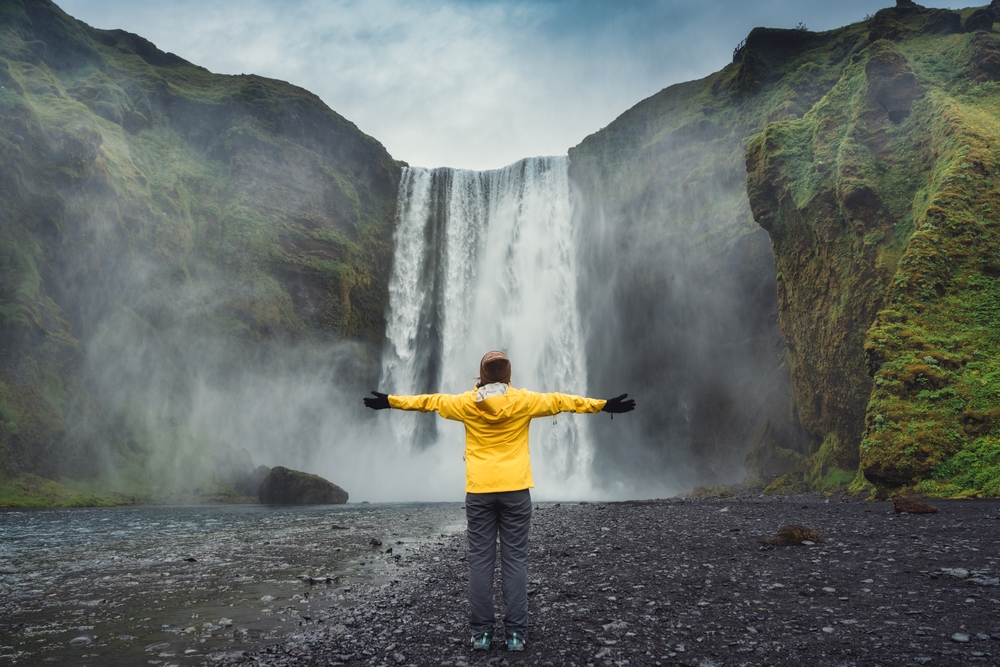
Final Thoughts On What To Wear In Iceland In October
Packing for Iceland in October might seem like a chore with so many layers to address, but trust me, when you’re standing under the Northern Lights or hiking up to a glacier, you’ll be so glad you put the effort in.
With this guide to what to pack for Iceland in October, you’ll be ready for whatever the land of fire and ice throws your way. The weather will be unpredictable but the adventures will be thrilling and rewarding.
If you wear the right Iceland outfits in October, you’ll be able to focus on taking in the spectacular landscapes instead of dashing back to the car for warmth. And even if the weather takes a nasty turn, you can always go for a soak in a geothermal hot pot to thaw out.
So take a little time to prepare, and in the end, enjoy the adventure of a lifetime!
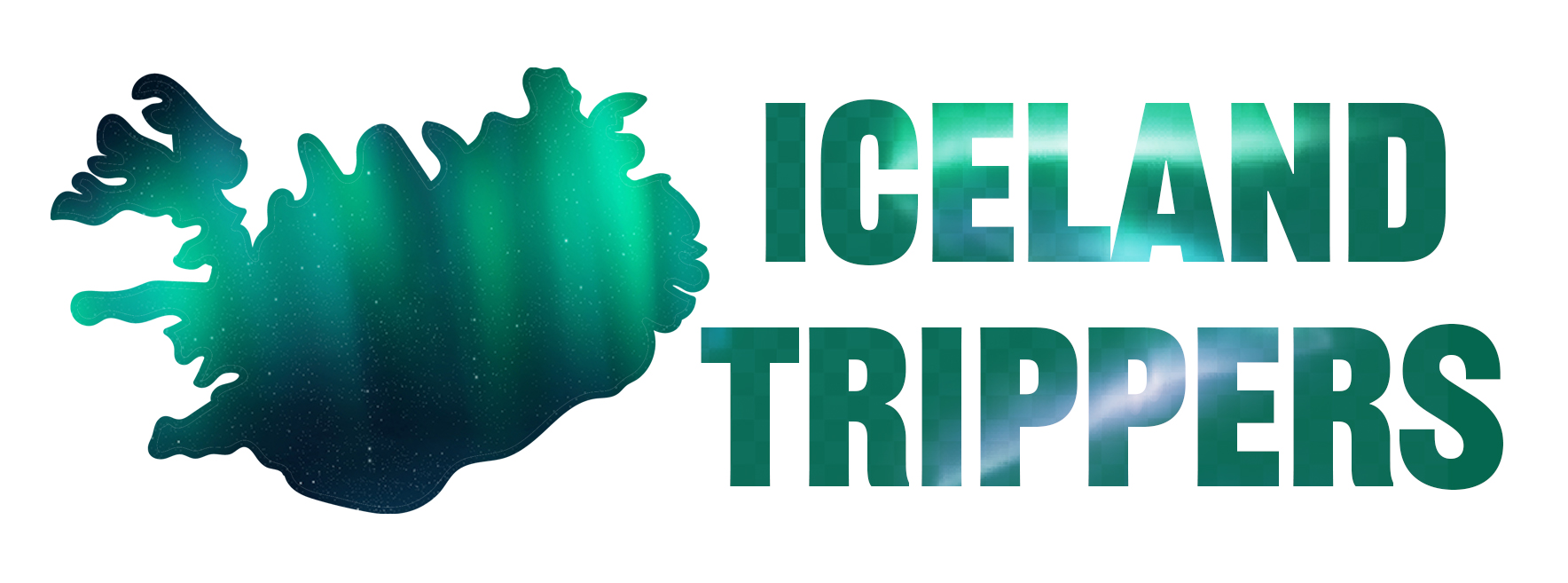
 What to Wear in Iceland in December: Iceland Outfit Ideas For Your Winter Trip
What to Wear in Iceland in December: Iceland Outfit Ideas For Your Winter Trip